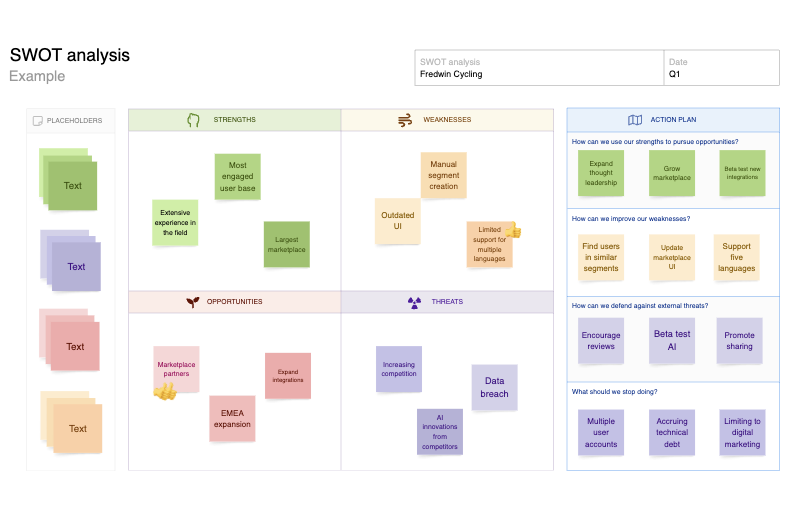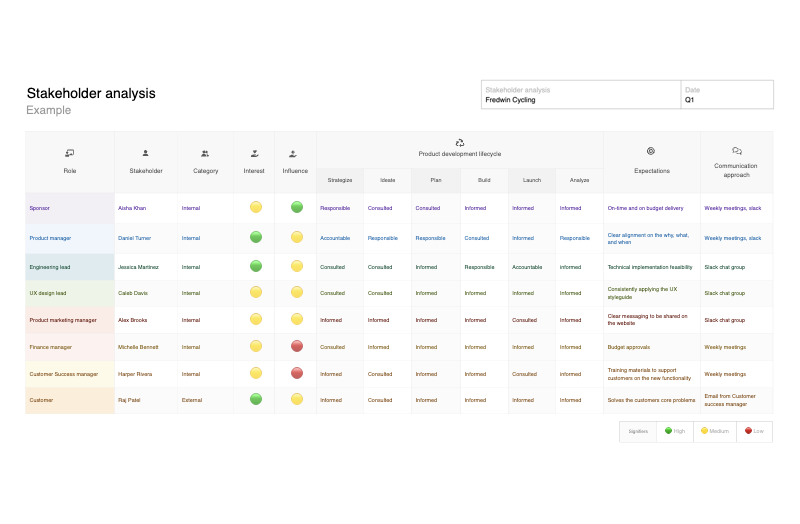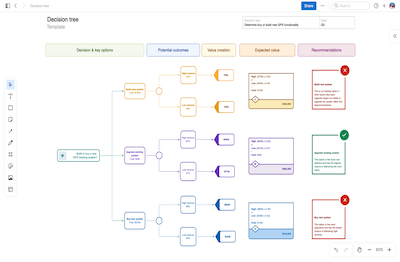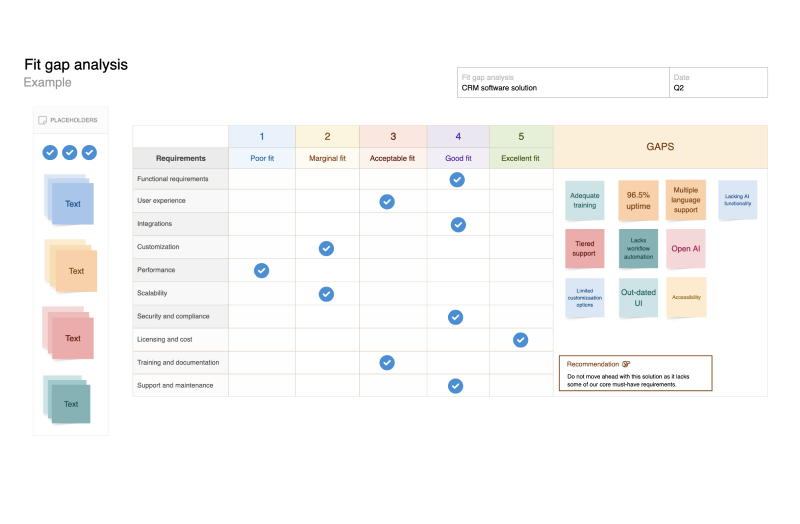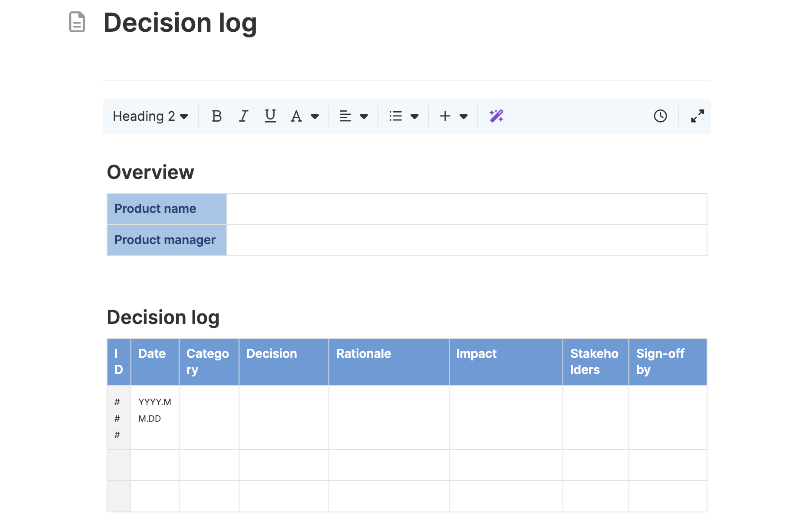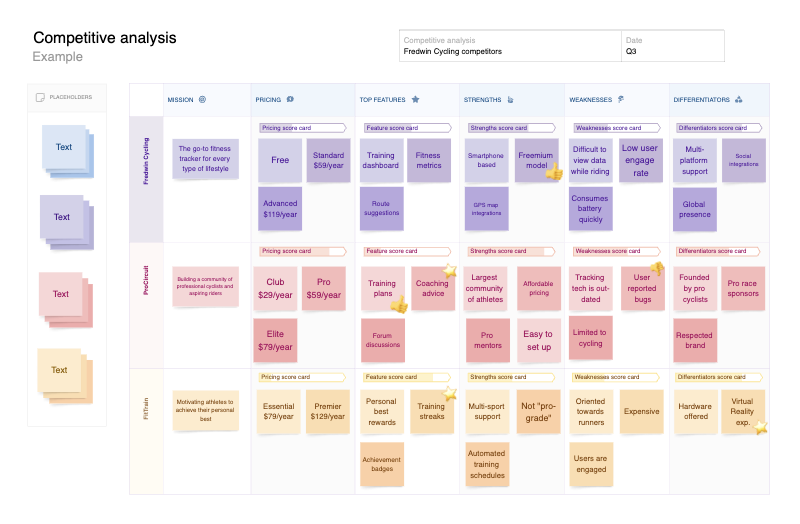Gap analysis template
Identify gaps between where your product is now and where you want it to be
Use template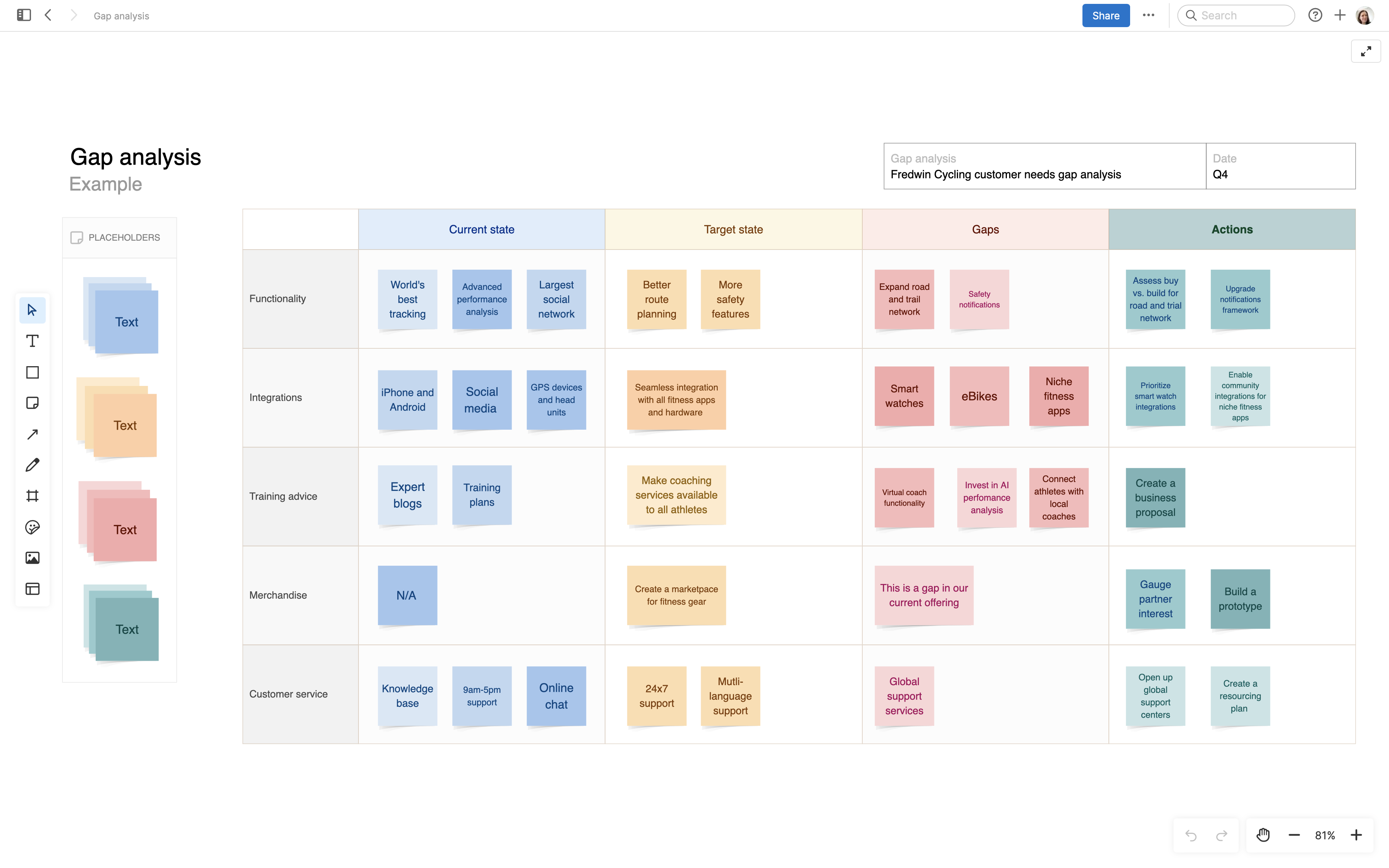
About the gap analysis template
There is always room to improve. A gap analysis helps product teams take a clear-eyed look at where the product falls short — so everyone can focus on the right improvements. Use this template to map out what is missing, where expectations are not met, and what customers actually need. Documenting this information in a central place makes it easier to spot patterns and build a plan to close the gaps.
Included in the gap analysis template
This gap analysis template includes built-in capabilities such as:
A menu of classic whiteboard features (including shapes, sticky notes, grids, and emojis)
Quick access to best practices and a pre-filled gap analysis example for guidance
Inline comments to gather feedback, questions, and ideas from teammates
A voting tool to help everyone reach a consensus
Presentation frames to easily share your work
How to use the gap analysis template
Use this gap analysis template to compare your product's current state with where you need it to be — whether in functionality, integrations, user experience, or support. Identify gaps, then brainstorm concrete actions to address them. Pull in insights from customer feedback and stakeholders to ensure nothing gets overlooked.
Then, align on an action plan. Set measurable goals, assign responsibilities, and define a timeline for improvements. Keep the template updated as customer needs shift and market dynamics evolve — so the team always has a clear view of what needs attention next.
Best practices
Identify where your product needs improvement to help inform strategic planning.
Focus your analysis: Define what you want to analyze. For example, you could evaluate the gap between customer needs and your product capabilities, or explore discrepancies across strategic goals and actual performance.
Define success: Gather information about your product's present state. Try to include both quantitative and qualitative data. Then, establish what success looks like by defining the specific outcomes you want to achieve (the future state).
Analyze gaps: Compare your product's present and future states. Gaps between the two might include product features, performance, processes, skills, and more. Prioritize gaps based on business impact.
Plan next steps: Determine the actions needed to address each gap. Use your analysis to set goals for improvement and make strategic planning decisions. Update your gap analysis as circumstances change.
FAQs about the gap analysis template
Why is a gap analysis template important?
The gap analysis template gives product teams a structure to identify differences between a product's current and desired future state. Easily customize the template to highlight areas for improvement and prioritize actions to close any gaps. This exercise can help teams strengthen product strategy and deliver greater value to customers.
What are some gap analysis best practices?
Before you begin your gap analysis, clearly define your objective. Invite relevant stakeholders to your whiteboarding session to gain a holistic view of gaps. Link to supporting documents or data points to provide context for items on your board. Set measurable criteria to define what success looks like so you can gauge your progress.
What types of gaps can this template help you analyze?
Product managers can analyze performance gaps (e.g., current vs. desired outcomes), process gaps (e.g., workflow inefficiencies), and capability gaps (e.g., missing skills or resources). The template is flexible enough to adapt to a wide range of contexts.
Is this template free to use?
Yes. To use this gap analysis template, sign up for a free 30-day trial of Aha! Whiteboards. (You can also try this template in Aha! Roadmaps if you need a complete product management solution.) Easily customize the template to suit your needs, then share it with as many people as you want (for free) to streamline collaboration.
